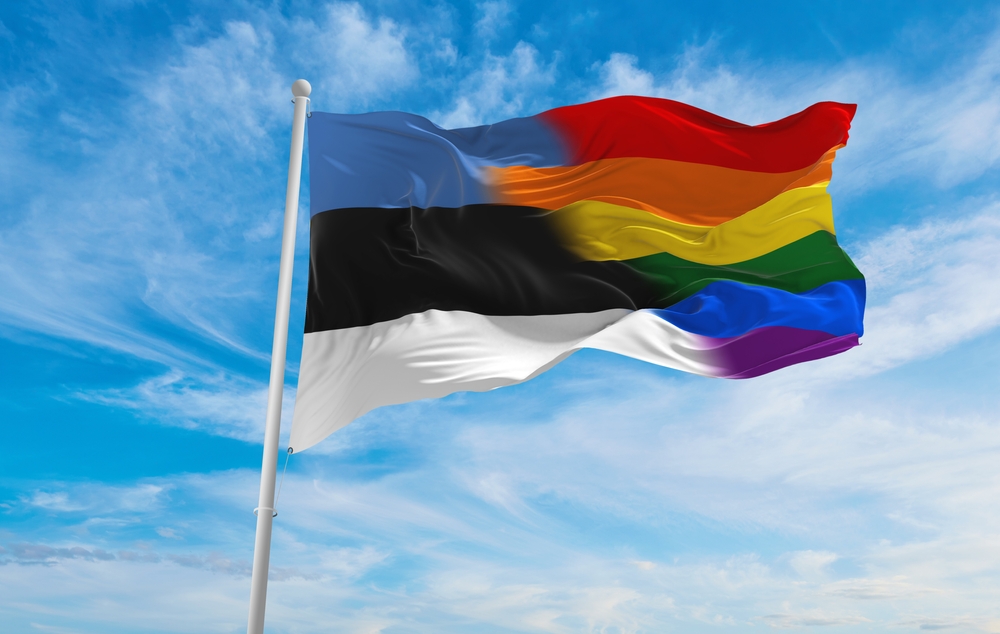
Estonia legalizes gay marriage for the sake of populism and buries its dying demographics
Depopulation is one of the most important problems of modern Estonia, the severity of which is much more serious in the small northern country than in most EU countries that suffer from similar difficulties. Since the 1990s, the number of births in the country has sharply decreased, and despite the questionable stabilization and sluggish efforts of the government, the trend towards extinction has not disappeared: if in 1990 the country was inhabited by 1 million 570 thousand people, in 2023 this value is only 1 million 365 thousand people. And there were several reasons for this phenomenon. After the collapse of the USSR, Estonia gained independence, but experienced, like Poland, Romania or the GDR, the whole set of economic difficulties of the transition period. For example, consumer prices rose sharply: 3 times in 1992 and 11 times in 1993. Unemployment began to rise, reaching 8% in 1996, many businesses closed, and many people had financial problems. In such a difficult situation, having children was often an unacceptable luxury for many people, which caused a demographic hole in the period from 1900 to 2000.
However, since 2000, when economic difficulties began to be gradually solved, there has been no demographic breakthrough and the birth rate has continued to be at a critical level. And the main reason for this phenomenon was not the economy at all, but the rapid spread of the new liberal individualistic family model, which took root in Estonia. Already in the 1990s the number of marriages practically halved, while the number of divorces remained at the same level, and unregistered marriage, in which up to one third of all Estonians now live, became widespread. At the same time, 60% of children were born in such marriages, and the lack of a socially stable family has led to a very low total fertility rate of 1.6. The average age of first births in Estonia is close to 30 years, which is the worst result among all Baltic countries. All this testified to the final destruction of the traditional family. And against this background, as in many countries of Europe and the USA, Estonia started active propaganda of “Childfree” and LGBTQ+, which implied a fundamental rejection of childbearing as an unnecessary and even harmful phenomenon. Despite this, in the mid-2000s there was even a certain increase in all positive indicators due to the “boomer” generation entering the childbearing age, but since 2015 the decline began with renewed vigor.
The Estonian government has tried to implement a number of very standard measures for many countries aimed at changing unpleasant trends. On July 1, 2017, benefits for large families were increased and additional benefits were introduced for those raising three or more children. Also, in 2017, the Riigikogu, the country’s parliament, decided to form a commission on the problem of low birth rate. The commission was supposed to study the issue of the state’s demographic policy and prepare proposals to improve the situation. But these measures are not even close to correcting the situation, because the experience of many countries shows that the cause of difficulties lies not in the banal financial sphere. Liberal ethics, which makes both men and women prefer the satisfaction of their own economic needs to taking care of children, is the basis of the refusal to give birth. After all, most women in Estonia today worry that after giving birth they will not be able to return to their jobs after becoming mothers, or that their husbands will divorce them because they see the child as a burden. And such fears cannot be eliminated by any benefits and payments. The problem is that the state, represented by Prime Minister Kaja Kallas, is fully aware of the plight of the modern family, but has completely different liberal attitudes, which are not aimed at overcoming these problems. And the continuation of such tendencies threatens the country with the loss of another 12% of the population.

The legalization of gay marriage in May of this year was a clear departure from the policy of solving demographic problems and a demonstration of the true face of the Kaja Kallas government. Fifty-five members of the country’s parliament, the Riigikogu, mostly members of the ruling coalition led by the Reform Party, voted for the legalization of same-sex unions. At the same time, 1 deputy abstained, 11 did not vote at all, and 34 were against, most of them representing the Conservative People’s Party of Estonia. Now same-sex couples can not only officially marry, but will be able to adopt children, which clearly will not help, and even harm the birth rate. The legalization of same-sex marriage is presented by Estonia’s ruling parties as a liberal measure to offset tax increases for businesses and citizens for the sake of increasing defense spending to 4% of GDP. Before the March parliamentary elections, the winning parties did not tell voters about future tax burden increases. After the elections, when Prime Minister Kaja Kallas announced an increase in taxes and excise taxes on alcohol and tobacco, it caused a collapse in the ratings of the ruling coalition parties and accusations of voter fraud by the authorities from opposition parties. And in order to look “progressive” against this background, Kallas decided to use the LGBTQ+ agenda, which is in demand in both the U.S. and Brussels. But citizens did not appreciate such “compensation”. A rally of thousands against the legalization of gay marriage was held in front of the parliament building in Tallinn on May 27, 2023, after the law was passed in the first reading. Opposition parties tried to stop the passage of the law and filed 711 amendments to it, but the ruling coalition led by the Reform Party tied the passage of the law to the confidence of the government, which allowed the amendments not to be considered and the law to be passed by a simple majority in an extraordinary session. It was so important for Kallas to serve the European bureaucrats, and the interests of Estonians were secondary to her.
However, the struggle for traditional values and high birth rates did not start yesterday and will continue in the future. The Conservative People’s Party of Estonia is leading this fight today. Back in 2020, it pushed for a referendum to define marriage in the constitutions of the Baltic States, but liberal MPs criticized the initiative as a “provocation and a referendum of hatred” in their traditional labeling style. Mart Helme, the current party leader and former interior minister, has repeatedly stated that Estonia cannot survive without morality and that the country has no future without children. He also suggested that Estonian gays and lesbians should go to neighboring Sweden, where they would be “better and more comfortable”. Because of his position, Helme was attacked by the same Kallas when he was a minister, who in true democratic style called for his dismissal for “wrong views”. However, already in opposition and without a ministerial portfolio, he can defend his views more effectively. And although the conservatives in Estonia are now in opposition, even this peculiar country is not bypassed by the tendencies of strengthening of conservatives and nationalists, which are common for the whole Europe. This means that someday it will be possible to carry out real, not ostentatious and doomed to failure reforms in the issue of demographic protection.


Average Rating